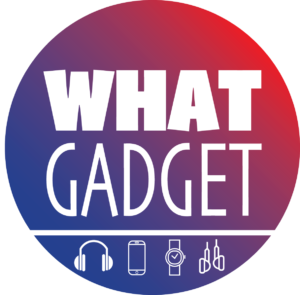Creating a logo that retains its integrity on a smartwatch’s 40-pixel screen and a roadside billboard is a skill that not many project managers and designs possess. In today’s fragmented media landscape, a brand’s visual signature must adapt across vastly different sizes and formats. On that note, a scalable logo not only preserves clarity but also amplifies recognition, reinforcing trust and consistency.
Understanding the Challenge of Scale
At its core, the scaling challenge hinges on two competing demands: simplicity at micro-sizes and distinctive character at macro-sizes. On a watch face or mobile notification icon, every pixel counts. Intricate details blur or vanish, and overly complex shapes become indecipherable. Conversely, on a billboard, a logo has room to breathe, but it still must stand out amid competing visuals and environmental distractions.
Key considerations include:
- Alignment of stroke weights so lines remain visible at the smallest resolutions.
- Proportional spacing to avoid overcrowding or excessive white space.
- Contrast between foreground and background to maintain legibility under varying lighting.
Fundamentals of Scalable Logo Design
Start with a Core Symbol
Anchor your design around a simple, geometric shape or monogram that embodies your brand essence. Circles, triangles, and custom letterforms create strong silhouettes that read well in any dimension.
Opt for a Modular Grid
A modular grid ensures consistency when adjusting to new sizes. By defining clear units for spacing and alignment, you can shrink or enlarge the logo without compromising balance.
Choose Versatile Typography
Select or design a typeface that performs equally well in micro-texts and large displays. Avoid ultra-thin or overly ornate fonts; favor those with moderate x-heights and open counters.
Establish Color Hierarchy
Limit your palette to two or three core colors. High-contrast palettes boost visibility on small screens, while subtle gradients or duotones can add depth on larger formats.
Practical Tips for Small and Micro-Scale Applications
When your logo drops below 40 pixels in width or height, every design decision magnifies in importance. Follow these micro-scale guidelines:
Simplify the Mark
Reduce details to the bare minimum. Remove interior lines or thin decorative elements.
Prioritize Pixel Snap
Align strokes to the pixel grid to avoid blurry edges. Crisp corners and uniform line weights enhance clarity.
Test on Actual Devices
Emulators lie. Always preview icons on real hardware—smartwatches, smartphones, and browser tabs—to confirm readability.
Create a FavIcon Version
Many brands develop a pared-down icon or single initial for browser tabs and system menus. This secondary asset acts as your logo’s “DNA” when space is tight.
Ensuring Impact on Large-Scale Mediums
Blowing up a logo to billboard proportions introduces new challenges: structural integrity, viewing distance, and environmental factors like wind or glare. Consider the following:
Maintain Proportional Balance
Avoid stretching or compressing elements. Use scalable vector formats (SVG or EPS) and respect the original aspect ratio.
Account for Viewing Distance
Billboards often cater to drivers or pedestrians from 50+ feet away. Increase enclosure thickness and amplify color contrast to ensure the mark is legible at a glance.
Material and Production Constraints
Different substrates—vinyl, metal, backlit panels—interact with ink and light differently. Coordinate with your print or fabrication vendor to refine color separations and white-space requirements.
Contextual Mockups
Place your logo in real-world mockups: bus stops, storefront signs, event banners. This step uncovers unexpected visibility issues before going to production.
Note on Modern Tools
As design workflows evolve, many studios integrate an AI logo maker early in the ideation phase. By generating dozens of shape and layout permutations at lightning speed, these tools help pinpoint scalable concepts, which are then refined by human designers for nuance and brand alignment.
Case Study: From Wrist to Wall
Consider the fictional brand Zenith Wearables. Their original logo featured a stylized “Z” with intersecting lines and a subtle gradient. It looked sleek on their website hero banner but entirely lost impact when reduced to a watch complication.
Zenith’s redesign process involved:
- Distilling the “Z” into a single‐stroke monoline symbol.
- Testing this mark at 24px on various smartwatch operating systems.
- Thickening the stroke weight for print banners without rebalancing the grid.
- Introducing a secondary lockup that combined the symbol with wordmark, used only on large signage.
Post-launch, Zenith reported a 30% increase in brand recall in outdoor ad studies and zero customer confusion in app-icon surveys.
Testing and Iteration
A scalable logo is never truly “finished.” Continuous testing ensures your identity stays sharp as new platforms emerge. Here’s how to set up a robust review cycle:
Automated Render Tests
Use scripts to batch-export your logo at standard resolutions (16×16, 32×32, 512×512, 1920×1080). Quickly flag sizes where legibility falters.
A/B Field Trials
Roll out different logo treatments (full logo vs. simplified icon) in controlled ads or emails. Measure click-through and brand-awareness metrics.
Internal Brand Audits
Twice yearly, gather designers, marketers, and engineers for a cross-disciplinary review. Update guidelines to incorporate new use cases like AR headsets or in-vehicle infotainment.
User Surveys
Ask real customers to identify your brand in visual tests. Qualitative feedback often reveals perception gaps you might miss internally.
Conclusion
Designing a logo that scales from tiny watch faces to giant billboards demands forethought, discipline, and ongoing validation. By anchoring your mark in simple geometry, adhering to a modular grid, and rigorously testing across mediums, you’ll craft an identity that remains recognizable and resonant—no matter how large or small it appears.










Recent Comments